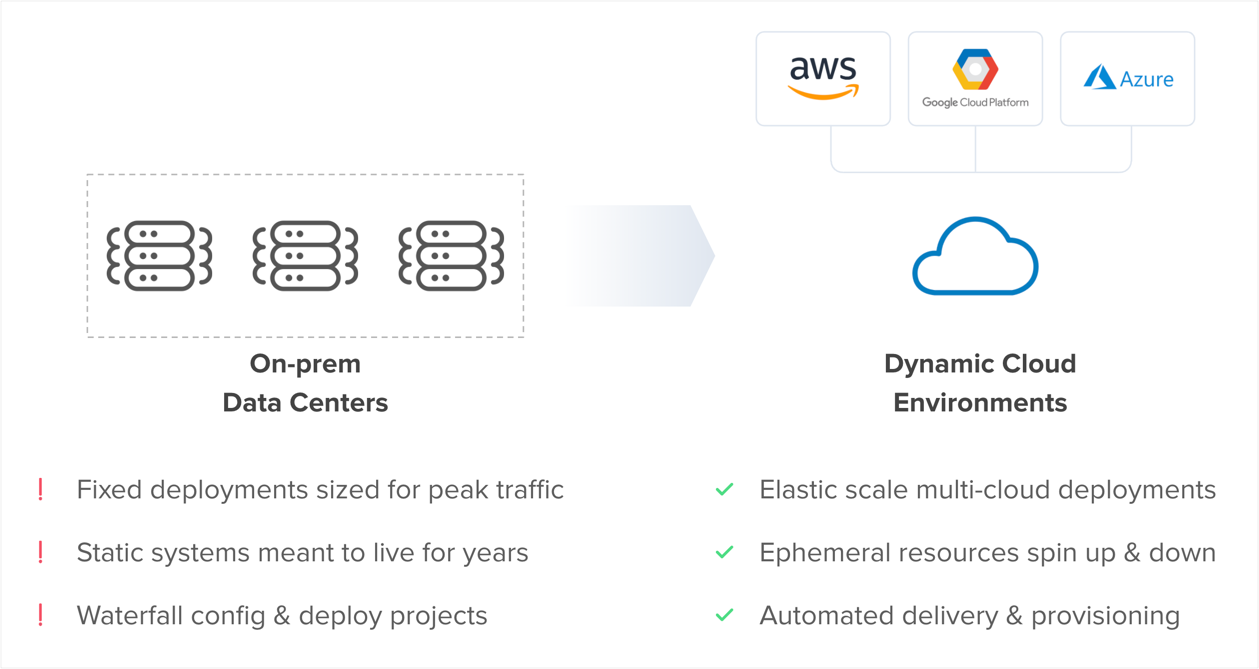Every company is becoming a technology company. You’ve heard that before. We’ve said that before. The glaring truth behind this statement is that technology is the only way to remain competitive in today’s fast-paced landscape. For some organizations, this means embracing technology; for others, this means leading with it. Either way, the primary way to be a technology company is to deliver software—as famously stated by Marc Andreesen nearly a decade ago,Software is Eating the World.
Software delivery has undergone its own transformation in recent years with the rise of cloud computing. What was once multi-year, waterfall projects to develop and package software for major releases is now a continuous, agile stream of updates. Similarly, what was once fixed data centers of static servers is now dynamic cloud environments of elastic resources across IaaS providers such as Amazon Web Services (AWS), Google Cloud Platform (GCP), and Microsoft Azure.
The underlying theme behind software delivery and infrastructure provisioning in the cloud is speed. Competitive pressures and growth both demand it. Businesses must deliver continuous innovation to their customers, which means that developers must deliver continuous innovation back to the business—all in the form of software.
In this virtuous cycle, velocity at scale emerges as the primary business and technical driver, with DevOps programs as the agent of change and method of achievement. Every company is trying to do more with less, which means streamlining as much digital innovation and process improvement as possible. As a result, IT and Security teams are increasingly becoming business enablers. Want to be a hero at your company? Embrace this change. Want to be a leader at your company? Empower your teams.
What is the Cloud Operating Model?
To understand our new paradigm, let’s first look at the traditional operating model. Prior to the advent of the cloud, companies would spend large amounts of capital expenditures on data center space. These environments were fixed, generally sized up for peak traffic on the year. The servers in these data centers were meant to live for years, with one-time configurations and infrequent updates. Any changes to these environments would have to go through a very long, manual, and painful process.
The cloud changed all of this. Companies can now consume a wide array of compute, storage, and networking resources on-demand as pay-as-you-go operating expenses. The environments are dynamic, with elastic resources spinning up and down, adapting to usage patterns in real-time. The resources are immutable, and only meant to last for weeks, days, hours, or even minutes. Environments are configured via automation tools and workflows, with any changes propagating across the fleet near instantly.

The demands for velocity at scale can only be realized by fully embracing the cloud, but it doesn’t come easily. With such a significant shift in environmental characteristics and behaviors, the underlying architecture must be able to adapt. Enter the Cloud Operating Model—a strategic framework for cloud adoption driven by a DevOps culture of automation that impacts people, process, and technology.
#devops #secuirty #shift left #devops and cloud
